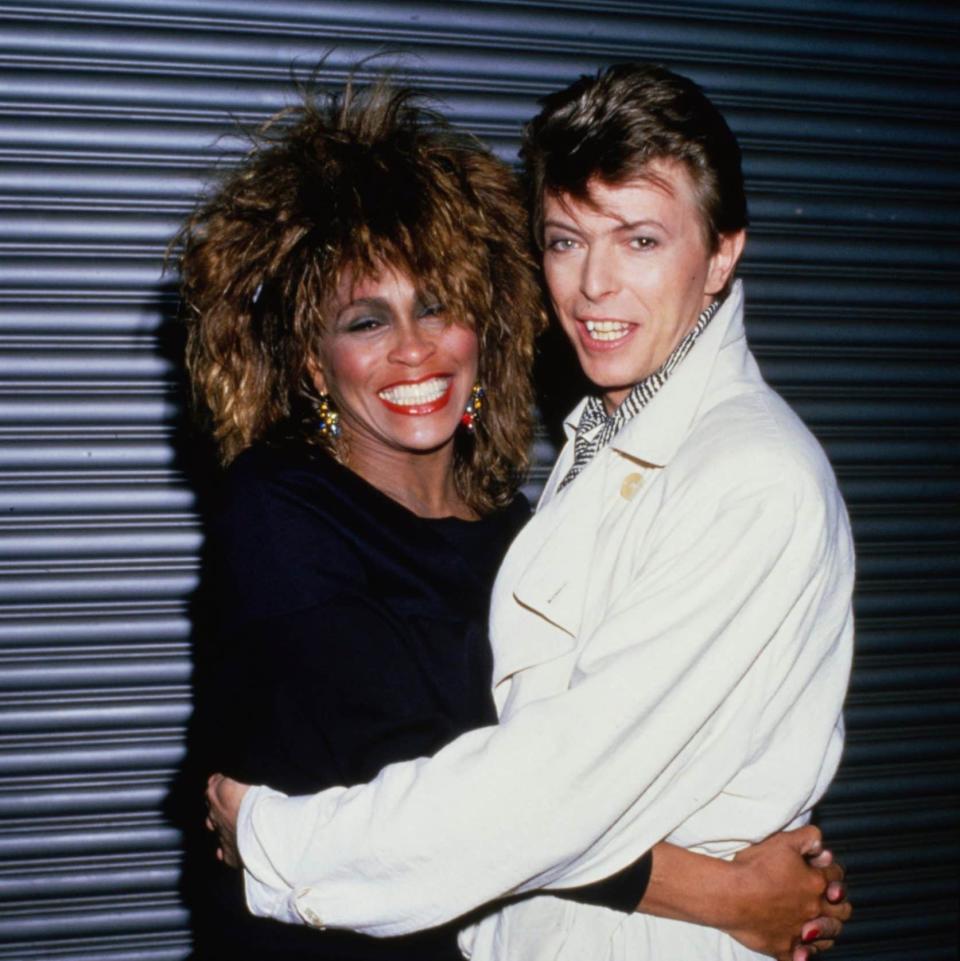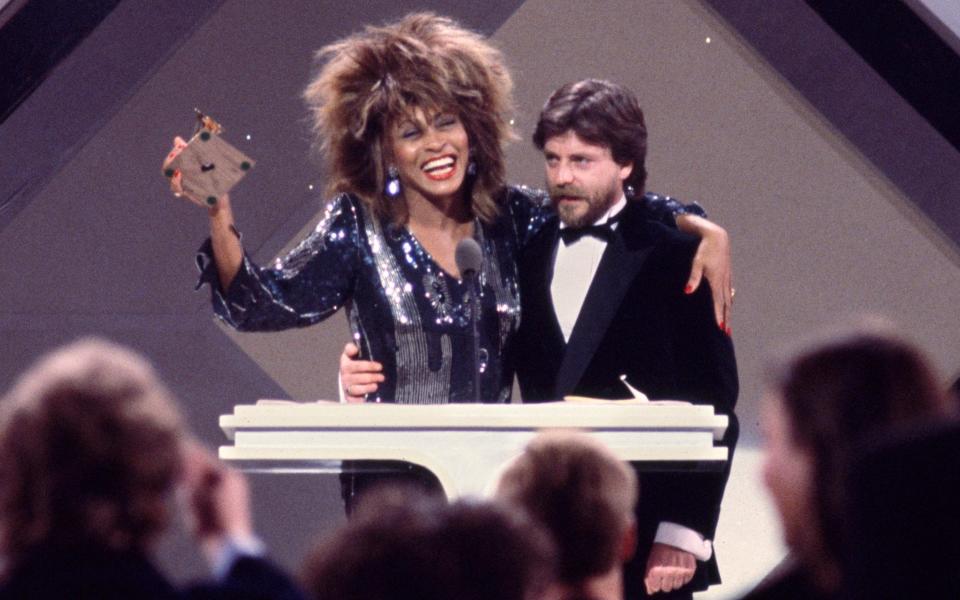America rejected Tina Turner – but British synth-pop saved her soul

Tina Turner, who has died aged 83, enjoyed her greatest success in the Eighties with the trio of albums Private Dancer, Break Every Rule and Foreign Affair. The records sold well over 20 million copies between them and spawned a series of record-breaking world tours. But these achievements may not have come about had Tennessee-born Turner not been involved in one of the more incongruous partnerships in the history of popular music: a collaboration with Sheffield synth-pop pioneers Heaven 17.
Turner travelled to Britain in 1982 when in her early 40s following her divorce from abusive husband and former bandmate Ike. As Ike & Tina Turner they’d had hits in the Seventies with tracks such as River Deep – Mountain High and Nutbush City Limits. But Turner’s career had stalled, she had little money and – although signed to Capitol Records – was in search of a new musical identity and image.
That the queen of soulful American rock ’n’ roll should find this in some New Wave keyboard warriors from an industrial city in the north of England spoke volumes about her venturous spirit and desire for change. It also started a fruitful period of collaborations with British musicians including Mark Knopfler, Jeff Beck, Sir Rod Stewart and David Bowie. London, Turner later said of this period, “felt like home”. It’s no exaggeration to say that Britain saved her career.
In the early Eighties, Martyn Ware and Glenn Gregory were at the forefront of music’s electronic revolution. Ware had left his previous band the Human League and, along with another former member Ian Craig Marsh, had formed an experimental music production company called British Electric Foundation (BEF). Pop group Heaven 17, with Gregory as the lead singer, was one of BEF’s first projects.
Another BEF project was an album of cover versions of old soul and pop classics sung by famous singers. The album was pithily called Music of Quality & Distinction Volume One. Ware had lined up James Brown to sing The Temptations’ song Ball of Confusion on it. But when Brown demanded too big a cut of the royalties at the last minute, Ware ditched him and desperately searched for a new singer. A serendipitous meeting in a record company office saw a mutual friend suggest Turner, whose singing Ware loved. Turner, at something of a musical crossroads, agreed to do it.
Things didn’t get off to a great start. “She came into the studio and said, ‘Where’s the band?’” Ware has recalled. “I pointed at the Fairlight [digital synthesizer and sampler] and said, ‘That’s it.’” Turner had equally discombobulating memories about the newfangled gear: “It looked like an X-Ray machine. They’re putting these plates in and sound is coming out and you’re singing to it. I’m thinking, ‘I don’t know how this is happening but never mind – it sounds good.’”
Turner nailed her vocals in the first take. Even today, the songs sounds gleamingly futuristic, underpinned by her powerful soulful voice. A second song, a cover of Sam Cooke’s A Change Is Gonna Come, remains simply spellbinding.
“At face value it’s incongruous,” says Dhivya Kate Chetty, director of the BBC documentary When Tina Turner Came to Britain. “These two Eighties electro-nerds and Tina Turner, queen of soul. Yet Glenn and Martyn both say they had grown up loving black soul music. Tina was a goddess to them. Certainly it looks a bit strange on paper but this marriage seemed to really work.” Ware and Gregory weren’t the only synth-pop artists drawn to Turner – Erasure’s Vince Clarke, formerly of Depeche Mode and Yazoo, has professed to being a fan back then. “That’s where my influences lie, in the blues with people like Muddy Waters and Tina Turner,” he once said.

But this was just the beginning. So impressed were Turner and her manager Roger Davies with BEF’s work that they asked Ware and Gregory to work on songs for Turner’s new album, Private Dancer. Davies had been on the hunt for new sounds while in London, literally filling a leather bag with cassettes by the latest emerging artists. The South Yorkshire duo perfectly fitted the bill. The result was 1983’s comeback single Let’s Stay Together, a cover of the Al Green song that reintroduced Turner to the world. It was a global hit that reached number six in the UK and became the biggest-selling 12” record in American history. Turner’s mojo had returned stronger than ever before.
She performed Let’s Stay Together live on British TV show The Tube in December 1983 with a nervous-looking Ware and Gregory performing backing vocals in none-more-Eighties double-breasted Burton suits. It was a defining bravura performance by Turner, who was dressed in her iconic dystopian cavewoman outfit. For Ware it was a mind-bending experience.
“Two Sheffield electro-soul boys in suits awkwardly juxtaposed with Tina and her dancers dressed in Flintstones outfits. Are we cool? Or are they cool and we’re too straight? God knows,” he wrote in his autobiography Electronically Yours. But the performance got the music world talking. “She went back to the US a star again,” Malcolm Gerrie, The Tube’s executive producer, said in Chetty’s documentary.
But Britain remained her musical home. The Private Dancer album also contained What’s Love Got To Do With It, co-written by Manchester-born Terry Britten. The song, which won three Grammys and was Turner’s first solo US number one single, was originally recorded by Bucks Fizz, the lightweight British pop group who’d recently won the Eurovision Song Contest.
Although Turner was initially sceptical about the song (according to Britten she declared the “very white, very pop" original “terrible"), she slowed down the arrangement and made it her own. The album’s title track Private Dancer was written by Dire Straits’ Knopfler and its music video was shot in south London’s Rivoli Ballroom and choreographed by Dame Arlene Phillips.
Phillips tells me that it took Turner to come to the UK for people to appreciate her anew. “What happens is that some artists suddenly become so familiar that you tend to let them go out of your life after a while. And suddenly with this unusual turn of becoming established in the UK, people who never really thought about [Tina] suddenly realised she was the number one artist in their lives. We do something different over here: we create music that actually makes people feel like they belong to a club and belong to that artist,” Phillips says.
She adds that Turner’s manager Davies deserves much of the credit. “She wasn’t fame-hungry at all but [she] just [had] a very good manager who said, ‘Hold on here, let’s find this world that is going to fall in love with you just like first time round.’”

The shoot at Rivoli was the last event before the ballroom was shut for asbestos to be removed from the roof. It was “so run down”, says Phillips. But Turner was at the centre of everything, “telling stories and being there for everyone. It was such a beautiful memory.”
Chetty believes there was an element of racism involved in Turner’s relocation to the UK. “I think she was told in no uncertain terms [by people in the music industry] that she was too old, and they said ‘Who was going to buy the records of this old black woman?’ I think that in Britain there was already so much high regard for black American musicians that that made it easier here somehow,” she says.
But if Britain provided the springboard from which Turner soared, the act of soaring was solely down to the singer herself. “As a performer she worked from her gut, from strength and from power but it was coupled with tenderness, humanity and beauty,” says Phillips. “There were moments when we were filming Private Dancer when there were tears in her eyes. In every performance she hits an emotional edge. And as someone watching that performance you can’t help but feel totally connected to what she’s saying.”


